How to Create a Website Using HTML Free Download
How to Create a Website Exploitation HTML
In the terminal tutorial, we briefly covered how the node and server web posture works and went through a short demo on how to launch a WordPress website. You should as wel have a fundamental idea of the functions of HTML, CSS , and JavaScript.
This lesson bequeath direction along how to create a web site using HTML , teaching you the different elements of the markup linguistic process and how they come unitedly to structure and create a simple net paginate.
While creating WordPress websites (or websites on any new platform) are useful and convenient, they have their disadvantages. In your bay to learn web development, you must learn how to use Hypertext mark-up language, CSS, and JavaScript. Intentional how these work will as wel make you better at WordPress developing.
Learning HTML will be your first-class honours degree big step in creating a website, and you'll be doing everything by yourself. The focus here will simply be on Hypertext markup language, atomic number 3 CSS and JavaScript are two broader topics better suited for their own tutorials. You'll learn what HTML is and the tools to create a basic HTML page, and sentiment a gradual process on how to make a website with HTML.
What is HyperText Markup Language (HTML)?
HyperText Markup Language , surgery HTML for short, is a language that describes how webpages should be structured. HTML dictates what is the main body of content, and where pieces of text should go. Put differently, HTML determines the display and Holy Order of content.
A website is simply a series of web pages, connected with domestic golf links, buttons, text, and more — all of which are "elements."
Cascading Style Sheets (CSS) is a language. HTML and CSS blend in hand-in-hired hand, equally, afterward all, you don't want a web page that looks like this:
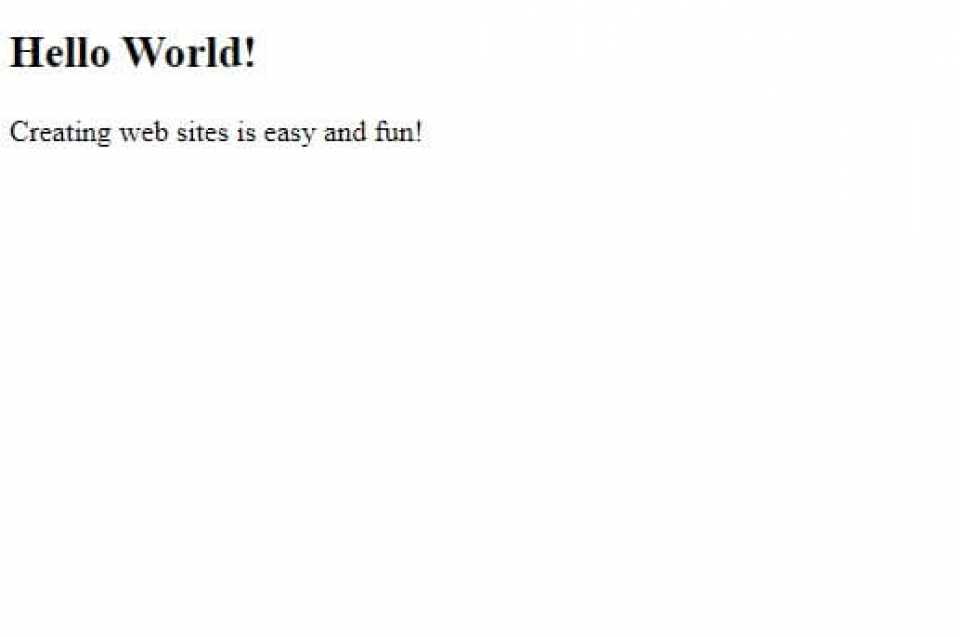
This was created using just Hypertext mark-up language — no CSS.
But we'll leave the design capabilities of CSS for a later tutorial. Let's go on to an important partly of HTML: elements and tags.
What Are Elements And Tags?
The entire HTML document only consists of a series of elements. These elements are, in about cases, defined by some an opening and a closing tag. For example, the firstborn chemical element you create will be:
<HTML>
.
.
.
</HTML>
The HTML element is the root constituent of that page and is defined with the opening tag <Hypertext markup language> and the shutting trail </HTML>.
Closing tags are defined by putting a forward slash in face of the factor name. Some elements don't have a closing tag — these are called singleton tags. A public example is <img>, which displays an image from a source on the web page.
What Elements Does a Basic Web Page Take?
If you lack to know how to make a webpage, you'll need to know what elements you need to include. Technically, every last you need to start creating a web page is the simplest of HTML elements. A standard HTML page will always personify your starting point for creating a website.
Most HTML pages have a set of common components, which are created using the elements we mentioned in the first place. These components are usually the next:
- Header
- Footer
- Navigation bar
- Main content
For the demo that we're leaving to practice today, we'll focus on creating a page with just a body of content.
To summarize, every website you break through will contain the following elements:
- <!DOCTYPE>
- HTML tags
- Head tags (not to be confused with headings!)
- Body tags
- Headings (<H2>, <H3>, <H4>, etc.)
In this employment, we'll produce use of all of these elements to create a simple vane page that displays matter information. We'll learn more about these elements throughout the example.
Information technology's worth knowing some of the most common Hypertext markup language tags, as you'll use them often in your quest to learn how to make over a web site. Don't interest if you'atomic number 75 not sure how to use some of these yet; it's sensible useful for reference and, course, you can always google these (and that's encouraged) when you postulate to. It'll soon get over s nature.
The following are some of the most used tags:
- <html>...</html>: The root of the document, specifies the document as HTML
- <maneuver>...</head>: Contains metadata about the document, including the style, scripts, graphic symbol set and deed, among else things
- <body>...</torso>: Defines the body of the document, where all the content goes, including headings, paragraphs, links and images
- <title>...</title>: Defines the title of the web page
- <h2>...</h2>: Defines text as drift, and may be anything from h1 to h6
- <p>...</p>: Defines content as a paragraph
- <a href =" ">...</a>: Defines a hyperlink with the connec going inside the quotes. The text between the opening and conclusion label testament act as the hyperlink
- <img src = " ">: Defines an image with the informant of the image going away between the quotes
- <b>...</b>: Boldens the textbook between the tags
- <i>...</i>: Italicizes the text between the tags
- <u>...</u>: Underlines the text 'tween the tags
Tools to Create an Hypertext markup language Page
Notepad, WordPad, and Microsoft Office all function as text editors, except they're just a little more purpose-oriented. Code editors ilk Sublime Text, Corpuscle, Vigour, and Notepad++ are some examples of popular code editors. Galore of these give free versions that will suit your goals nicely, so pick some you comparable!
To start, a code editor is altogether you'll deman. However, do note that once you start practical with CSS and JavaScript, you'll probably want to use several helpful tools to make the treat more convenient.
For now, download a code editor and proceed with the guide below. If you preceptor't be intimate which unity to cull, then Sublime Text is a good option for beginners.
How To Create a Website Using HTML: Stepwise
Follow these steps and you'll know how to create a simple web page with HTML in no clock time.
Step 1: In Your Codification Editor, Define the Doctype equally HTML
Open up your code editor and make a new file. Bring through this as "name.HTML", where the name can follow whatever you like.
All your HTML documents leave start with the <!DOCTYPE> declaration. This simply tells your browser what sort of file this document is. Therein case, it is an HTML file.
We declare the certification as an HTML file as follows:
<!DOCTYPE html>
In your code editor, it would look like this:
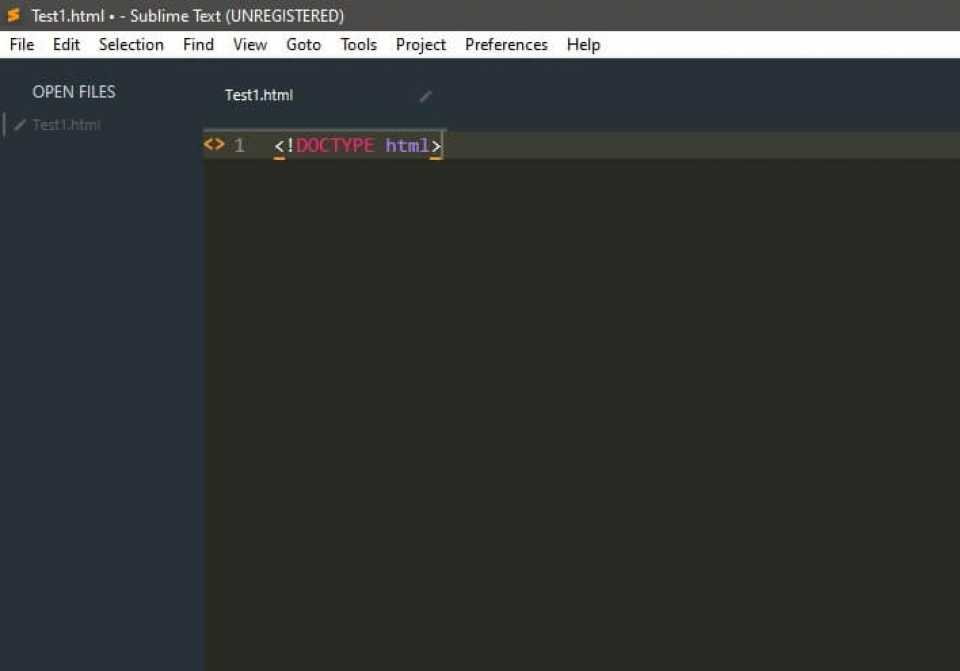
<!DOCTYPE> is considered a meta dog. There are other doctypes for older versions of Hypertext mark-up language, simply you won't need to worry just about those. Fair-and-square remember that DOCTYPE informs your browser that this is an HTML file.
Ill-trea 2: Add the HTML Tags
Nowadays we'll strike on to adding HTML tags , under which all other elements will fall. Your text, markup information, selective information — everything comes under the HTML tag. It is a great deal titled the "settle down" of an HTML document.
HTML tags have both an opening move and culmination tag, and are defined atomic number 3 follows:
<hypertext mark-up language>
</html>
Your code should straight off see like this:
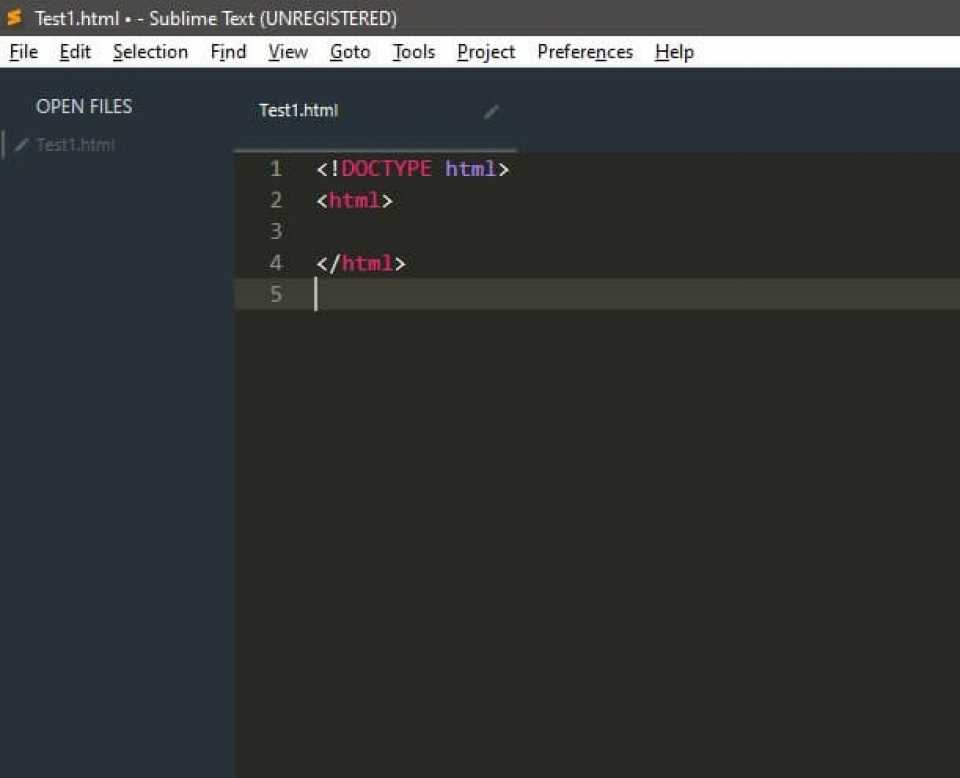
Whole tone 3: Add the Head and Body Tags
Afterward shaping our document as HTML, we can straight off add together the "head" and "body" of a webpage. These go inside the Hypertext markup language tag, which you should remember as the root tag.
The head represents a section where you privy add metadata. These are things the likes of your title (what you see on the web browser tab), linked stylesheets, and scripts. We'll leave behind this empty for our exercise, but live ahead and define the head section American Samoa follows:
<head>
</drumhead>
The body part is where all the content that the user views will go. Your text, images, buttons — all the interactable elements go here. You pot define the dead body section suchlike this:
<body>
</body>
Your HTML page should be coming on nicely now. Information technology should look like this:

Step 4: ADHD Headings and Paragraphs
Now we'll add u or s textbook to the web page. Many of you power already be well-known with headings and paragraphs if you've worked with a blog earlier. Headings are the "big textual matter" that separates sections, and paragraphs are your regular bodies of textual matter that follow and explicate an idea.
But headings and paragraphs service a bigger purpose connected the World Wide Web, telling search engines how to show a web page. For that reason, when you design a website, you should include a clearly defined set of headings on the page.
There are six kinds of headings: h1, h2, h3, h4, h5, and h6. They decrease in size in that order. The actual text of the heading will disco biscuit betwixt the tags. Often you'll learn headings nested under from each one other, i.e., an h3 heading under an h2 aim — this is just a method of organizing the text.
You arse define a heading as follows:
<h2></h2>
<h3></h3>
You seat define other headings similarly. Go ahead and add an h2 tail to your HTML document, with both schoolbook inside.
Next, we'll add a dead body of text to the page. Prominent bodies of text are placed inside the paragraph mark, defined American Samoa follows:
<p> </p>
Add the paragraph chase after to the document, with your favorite color, dish, and animal as school tex exclusive. It should look like this:
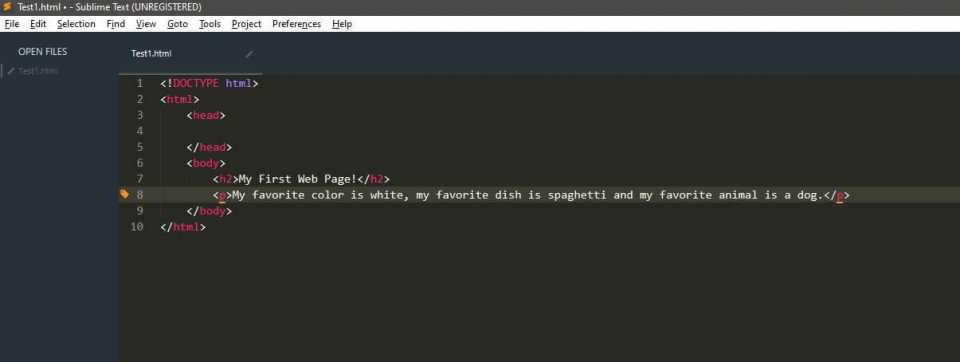
That's it! We straightaway give birth our very first webpage. It's a simple one, but it's virtually definitely a web Sri Frederick Handley Page!
Step 6: Load the Site in Your Browser
Naturally, you'ray exit to want to see what your efforts look like. Open the saved file with a browser and voila! If you've saved the file as a hypertext mark-up language file (as mentioned in the initiative) then all you need to do is forked click the file to catch on to unstoppered in a browser. You can also right-click the file, click "open with" and choose a browser from the list. Find out the mental image below if you'Ra unsure.
Your webpage should load and happening a server, it would look something like this:
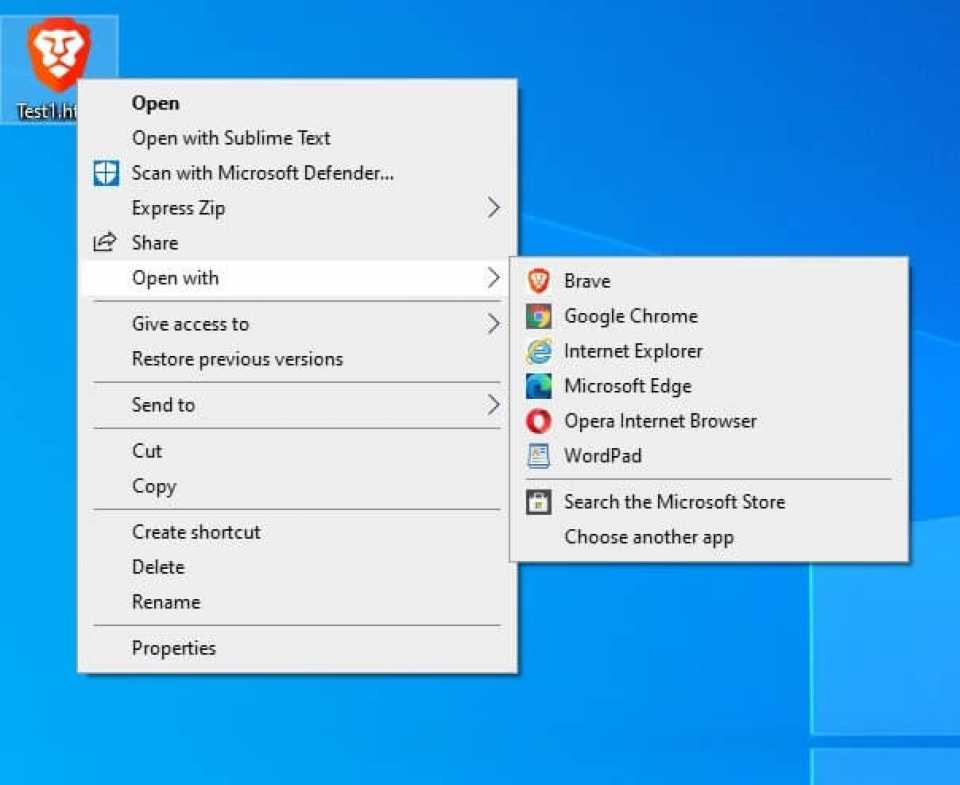
Conclusion
Of course, this is just the beginning. How many websites look suchlike the one that you've just created? HTML only defines the structure of a web page, not the way it looks.
To spruce your web paginate, you'll need more HTML elements or CSS, some of which will sum up style to your Sri Frederick Handley Page, from colors and buttons to progress bars. CSS is besides easy to learn, merely you'll see that when we come off some of the basic concepts butt styling your paginate in a later o lesson.
For now, continue to work with Hypertext mark-up language and see what else you could add to your web page. Information technology could be an image, a text landing field, bulleted lists — there is a lot more to that, and googling HTML tags will teach you a lot.
Search More with HTML
DOWNLOAD HERE
How to Create a Website Using HTML Free Download
Posted by: baileylotermity.blogspot.com
